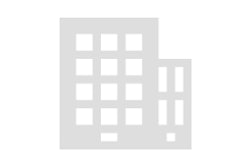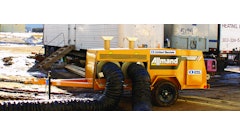As our climate becomes more severe, we're seeing more flooding and, as a result, more property damage caused by water. As an equipment rental business, you're in a prime position to offer assistance when this occurs, provided your inventory is stocked with the right tools and equipment.
When flooding occurs, the first order of business is of course to remove the water, and it's pretty clear this will require one or more types of pumps. What comes next can be more complicated. Removing residual moisture from the area demands the use of a variety of tools. Following is a list of the basic items you should offer:
- Dehumidifiers for removing moisture from rooms
- Axial dryers/air movers and centrifugal fans to evaporate moisture into the air for removal by dehumidifiers
- Air scrubbers to remove airborne contaminants
Moisture is the enemy
Whenever an area has been flooded, moisture remains long after the water is gone. Wet walls and carpets will never dry if the relative humidity in the air is too high. With that in mind, the most important step after removing standing water is to dehumidify the atmosphere. This requires the use of a dehumidifiers and high-velocity fans distributed around the room. The fans work to evaporate moisture from walls and floors so the dehumidifier can then remove the suspended moisture from the air.
Hosli at Quest recommends air movers be used in combination with dehumidification to speed up the evaporative process. Quest air movers focus their airflow on those hardest to dry places such as carpet and pad, sub-floor and walls, which helps in preventing costly secondary moisture damage due to the structure not being completely dry before renovations begin.
Low-Grain Refrigerants offer more bang for your buck
Ben Damiani, senior account manager with Dri-Eaz, notes that rental businesses should consider carrying LGR (low-grain refrigerant) dehumidifiers, which are more efficient than conventional models. While more expensive to acquire, rental businesses can charge a higher rate for these models because they're more effective, especially at pulling moisture out of denser wall and floor materials. To illustrate the difference, Damiani explains that an LGR dehumidifier works at lower humidity levels so will continue to draw moisture out of drywall, wood and cabinets until the space is completely dry, which helps prevent mold or mildew growth. Plus, LGR dehumidifiers are often more efficient in their electrical usage and thus more environmentally friendly.
LGR dehumidifiers are important to contractors working on damage restoration projects because insurance companies will pay more per day when LGR models are used in place of conventional models.
"Insurance carriers reimburse your customers based on equipment capacity," says Lance Speroni with Impact Restoration Supply. "This change directly impacts the equipment rental needs of your renter. During peak season, however, restoration companies will take whatever they can get their hands on. But during off-peak seasons these former customers are much more persnickety about what equipment is rentable."
It's in the air
Partnering air movers with dehumidifiers can be a very effective - and profitable - equipment package, Damiani says, as the air movers do an excellent job of moving the air around so moisture can be evaporated to be more easily absorbed by the dehumidifier. It's a good idea to offer a variety of different fans to suit your customers' needs. Axial air movers, for example, are effective for circulating the ambient air within a space. Drying a particular surface, however, like a floor or a wall, requires the use of a fan with a more focused air outlet. The most common is the centrifugal fan, often called a squirrel cage or snail shell, but there are also newer streamlined fans that are easier for customers to transport and more compact for storing. These fans concentrate a high-powered stream of air and aim it wherever it's needed.
One more piece of equipment rental businesses should offer is an air scrubber, Damiani says. Complete with a HEPA filter, these units have the ability to filter 99.97% of dust and fine particles (.3 micron or larger) from the air. This is extremely important whenever occupants have allergies or asthma, or in situations where mold and mildew are present, as spores can be hazardous to the health of occupants if they aren't removed.
Air scrubbers require a new filter with each new rental to help prevent cross contamination. This presents another revenue-generating opportunity for rental businesses, as HEPA filters cost around $130 each.
Air scrubbers can also be used for removing musty odors after a flood. Odor removal requires an activated charcoal filter that retails for around $30. In all such cases, charging a filter fee with the rental of these units can create an additional revenue stream for your business.
Hosli notes that air scrubbers are required by recent legislation for asbestos removal and during lead abatement on all houses built before 1978. "True HEPA Air Scrubbers not only control dust, odors and chemicals (when the HEPA and carbon filter are used), but also control airborne lead levels during common construction activities such as hand or power sanding and interior demolition, ensuring the safety, health and welfare of everyone on or near the jobsite," she says.
Don't forget...
Aside from the aforementioned equipment, there are other items rental businesses should consider carrying to adequately serve customers with damage restoration needs. Ozone machines, foggers, portable extractors, disinfectant products and moisture meters are just a few.
It's a good idea to carry replacement filters for the dehumidifiers you carry, as they can be a significant profit generator. Some rental businesses charge a filter fee on top of the rental rate, while others incorporate the filter cost into the overall rate. This can range from $12 to $20 per rental.
Customers enjoy being offered a complete solution for their specific needs. When you offer them a complete solution and save them from having to make several trips to complete their job, this makes you a hero in their eyes. Consider setting up restoration kits that could include items like deodorizers and disinfectants, filter masks, moisture meters, squeegee tools and microfiber towels. After the end of the job, offer to take back and credit the customers for the items they didn't use. Often, customers will not return the extra items, and in the process you are able to provide excellent customer service and fulfill a need often overlooked by potential competitors.


















